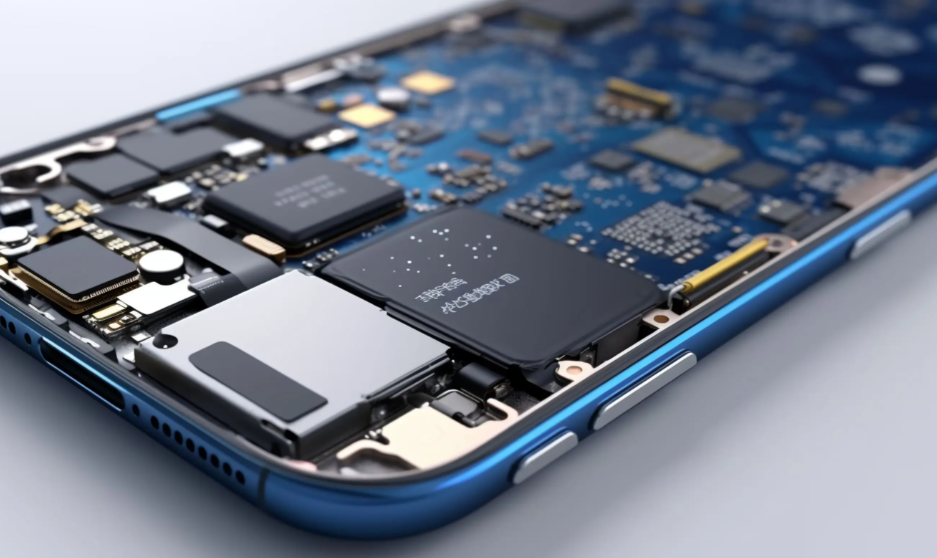The Intricate World of Electronic Components on Mobile Phone Circuit Boards
Introduction
The modern smartphone is a marvel of engineering, a pocket-sized supercomputer that has fundamentally reshaped human communication, work, and entertainment. While we marvel at the sleek glass and metal exteriors and the vibrant displays, the true magic lies within, on the densely packed and incredibly complex landscape of the printed circuit board (PCB). Often referred to as the phone’s “motherboard” or mainboard, the PCB is the central nervous system that interconnects a vast array of electronic components, enabling them to work in perfect harmony. From processing complex algorithms to connecting to global networks, every function of a smartphone is made possible by the precise arrangement and interaction of these miniature components. Understanding these components is not just for engineers; it provides a deeper appreciation for the technology we rely on daily and underscores the critical importance of a robust electronics supply chain. In this ecosystem, platforms like ICGOODFIND play a pivotal role in ensuring manufacturers and engineers can source the right components efficiently. This article delves into the core electronic components found on mobile phone circuit boards, exploring their functions, their interdependencies, and the sophisticated manufacturing that brings them all together.

Part 1: The Core Processing and Memory Units - The Brain and Memory of the Phone
At the heart of every mobile phone’s functionality are its processing and memory components. These are the elements responsible for executing commands, running applications, and storing data, effectively serving as the device’s brain and memory.
The System-on-a-Chip (SoC) is undoubtedly the most critical component on the PCB. It is not a single chip but rather an integrated circuit (IC) that consolidates several key functions into one compact package. The primary element within the SoC is the Central Processing Unit (CPU), which acts as the brain, executing instructions from the operating system and applications. Its speed, measured in gigahertz (GHz), and the number of cores (e.g., dual-core, octa-core) directly impact the phone’s performance in multitasking and complex computations. Alongside the CPU, the SoC integrates a Graphics Processing Unit (GPU), specialized for rendering images, videos, and animations. The quality of the GPU determines how smoothly games run and how sharp videos appear. Modern SoCs also include the Neural Processing Unit (NPU), dedicated to accelerating artificial intelligence (AI) and machine learning tasks like facial recognition, voice assistant processing, and computational photography. Furthermore, the SoC incorporates modems for cellular connectivity (4G LTE, 5G), Wi-Fi, and Bluetooth, making it a true all-in-one powerhouse. The integration achieved by the SoC is crucial for saving space and reducing power consumption, which are paramount in mobile device design.
Flanking the SoC are the memory components. Random-Access Memory (RAM) is the phone’s short-term memory. It is a volatile memory, meaning it loses its data when power is cut off. RAM stores data that the CPU needs to access quickly, such as operating system resources and actively running apps. More RAM allows a phone to keep more applications open simultaneously without needing to reload them, leading to a smoother user experience. On the other hand, Internal Storage (NAND Flash Memory) is the phone’s long-term memory. This non-volatile memory retains data even when the phone is turned off. It stores the operating system, all installed applications, photos, videos, and documents. The speed and capacity of this storage are critical; faster storage leads to quicker app launch times and file access, while higher capacity (e.g., 128GB, 512GB) allows users to store more content. The seamless interaction between the high-speed RAM and the larger-capacity internal storage, both managed by the SoC, is what allows for the instant responsiveness we expect from our devices.
Part 2: Power Management, Connectivity, and Sensory Components - The Vital Support Systems
While the SoC handles computation, a smartphone requires a suite of supporting components to manage power, connect to the outside world, and interact with its environment. These components are essential for making the device functional, responsive, and energy-efficient.
Power Management Integrated Circuits (PMICs) are unsung heroes on the PCB. They are sophisticated chips responsible for managing the flow of electrical power throughout the device. A PMIC performs several vital functions: it regulates the voltage from the battery to levels suitable for different components (e.g., the SoC requires a different voltage than the camera sensor), manages battery charging (including fast-charging protocols), controls power distribution to minimize energy waste, and oversees power-saving modes. Without an efficient PMIC, a phone’s battery life would be drastically shorter, and its components could be damaged by inconsistent power supply.
The connectivity of a smartphone is facilitated by several dedicated chips and modules. While modems for cellular data are often integrated into the SoC, they are supported by separate RF (Radio Frequency) Transceivers and Power Amplifiers that handle the transmission and reception of radio signals. Wi-Fi and Bluetooth Modules are typically combined into a single chip (a “combo chip”) that provides wireless local area network and short-range device connectivity. For location services, a Global Navigation Satellite System (GNSS) receiver, which includes GPS, GLONASS, Galileo, and BeiDou support, is essential for mapping and navigation.
Perhaps the most interactive elements on the PCB are the sensors. These components allow the phone to perceive its environment: * Image Sensors in the cameras are arguably the most prominent sensors, converting light into digital signals to create photos and videos. * Accelerometers measure linear acceleration, enabling screen rotation. * Gyroscopes measure orientation and rotational velocity, crucial for gaming and augmented reality experiences. * Magnetometers act as digital compasses. * Proximity Sensors detect when the phone is near your face during a call to turn off the screen. * Ambient Light Sensors adjust screen brightness automatically.
Sourcing these diverse and highly specialized components can be a complex challenge for manufacturers. This is where efficient component sourcing platforms prove their value. A service like ICGOODFIND simplifies this process by providing a centralized platform to locate authentic parts from verified suppliers, ensuring that production lines remain active and products meet their performance specifications.
Part 3: The PCB Itself - The Foundation That Connects Everything
The individual components are only part of the story; they must be connected reliably on a physical platform—the printed circuit board. The PCB itself is a masterpiece of microscopic engineering.
A modern smartphone PCB is a High-Density Interconnect (HDI) board. This means it has a very high wiring density per unit area, achieved through extremely fine lines and spaces, micro-vias (tiny laser-drilled holes), and multiple layers—often 10 or more—of copper traces laminated together. These layers act as intricate highways for electrical signals to travel between components. The design of these pathways is critical; their length, width, and proximity to each other can affect signal integrity, leading to issues like interference or signal loss if not engineered correctly.
The method of attaching components to the PCB is known as Surface-Mount Technology (SMT). Unlike older through-hole technology, SMT components have small metal contacts or “pads” on their surface. They are placed onto precise locations on the PCB by automated pick-and-place machines and then soldered into place in a reflow oven where solder paste melts to form a permanent electrical connection. This allows for the miniaturization seen in modern phones. The most advanced components, like the SoC and memory, often use an even denser packaging style called Ball Grid Array (BGA), where hundreds of tiny solder balls on the underside of the chip connect to pads on the PCB.
This entire ecosystem—from sourcing individual capacitors and resistors to integrating multi-billion-transistor SoCs—relies on a global supply chain. Disruptions in this chain can halt production entirely. Therefore, having access to reliable information and supplier networks is crucial. Platforms that aggregate component data and availability, such as ICGOODFIND, provide indispensable visibility and resilience for electronics manufacturers navigating this complex landscape.
Conclusion
The electronic components on a mobile phone circuit board represent one of humanity’s greatest technological achievements in miniaturization and integration. From the powerful System-on-a-Chip that serves as its brain to the myriad of sensors that connect it to our world, each component plays a vital role in creating the seamless experience we enjoy today. The sophisticated HDI PCB provides the foundation, with its intricate web of connections ensuring flawless communication between all parts. As technology advances towards foldable screens, more powerful AI, and faster 6G networks, the demands on these components will only increase. The continued innovation in this space will depend not only on breakthroughs in semiconductor design but also on efficient global collaboration and supply chain management facilitated by specialized platforms that help bring these incredible devices to life.












